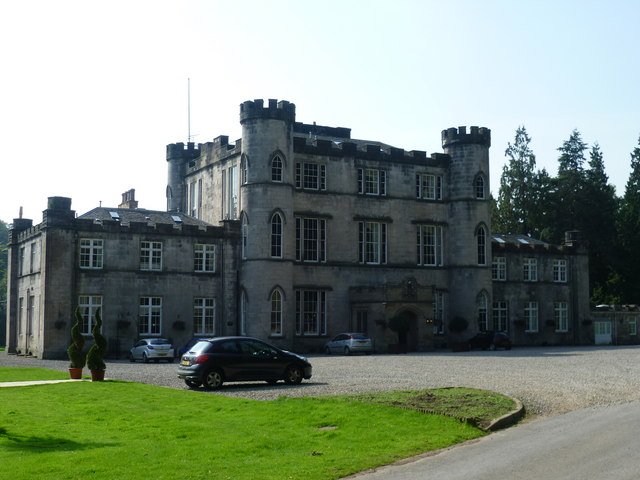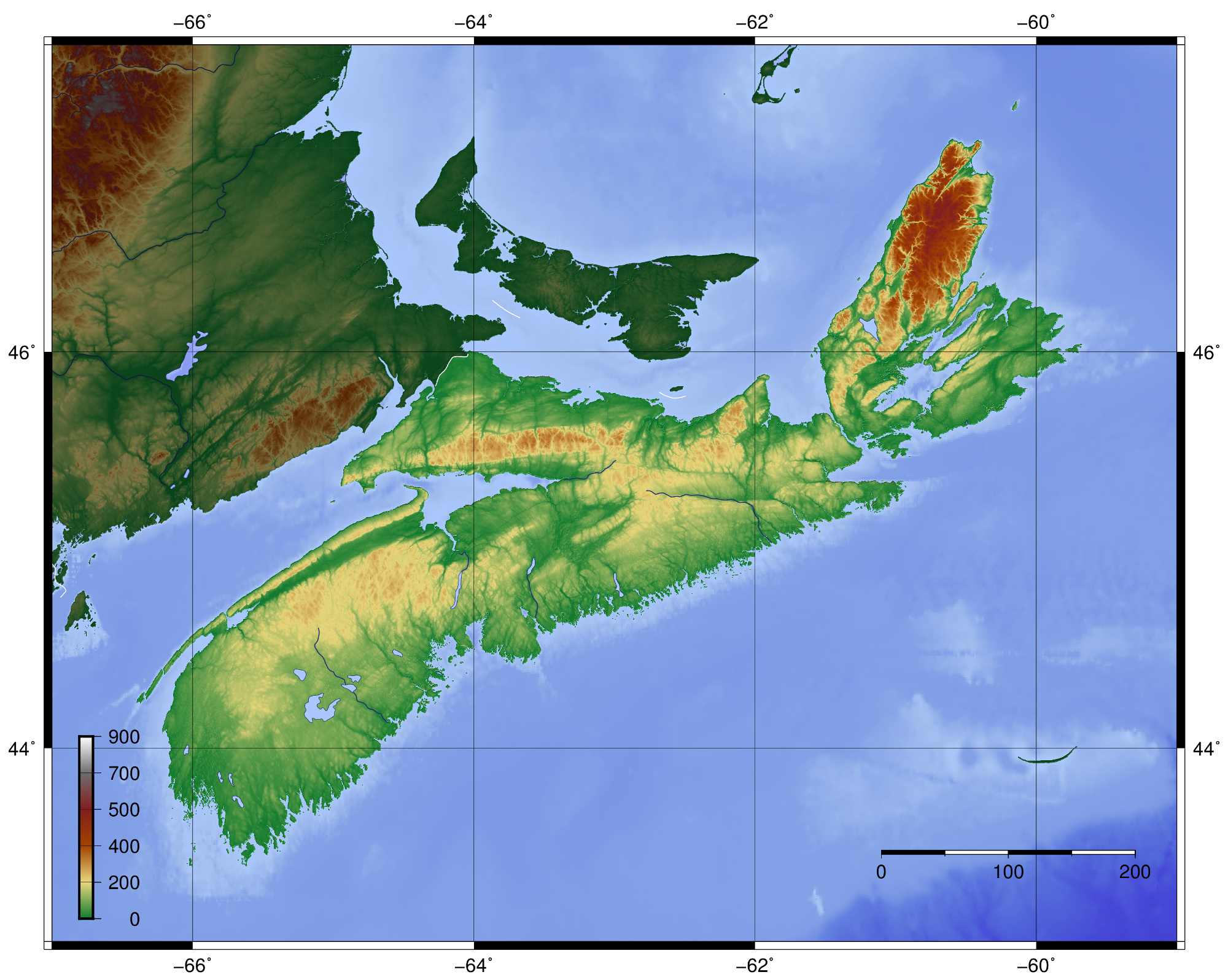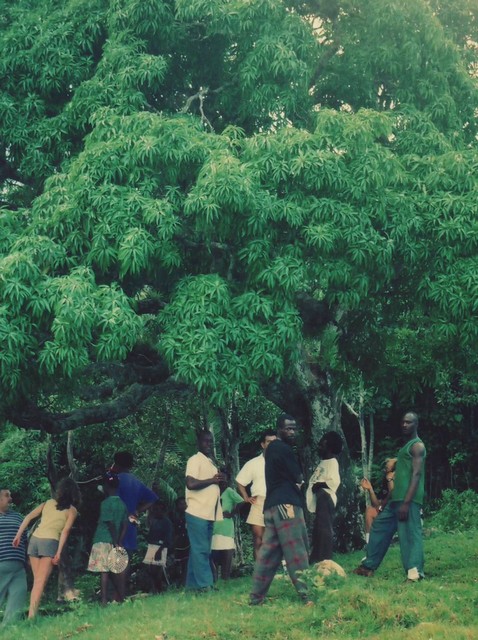|
Second Maroon War
The Second Maroon War of 1795–1796 was an eight-month conflict between the Maroons of Cudjoe's Town (Trelawny Town), a Maroon settlement later re-named after Governor Edward Trelawny at the end of First Maroon War, located near Trelawny Parish, Jamaica in the St James Parish, and the British colonials who controlled the island. The Windward communities of Jamaican Maroons remained neutral during this rebellion and their treaty with the British still remains in force. Accompong Town, however, sided with the colonial militias, and fought against Trelawny Town. Background The Maroons of Trelawny Town felt that they were being mistreated under the terms of Cudjoe's Treaty of 1739, which ended the First Maroon War. The spark of the war was when two Maroons, one named Peter Campbell, were found guilty of stealing two pigs by a court in Montego Bay. The court then ordered a black slave to flog the two Maroons, and the humiliation provoked outrage in Trelawny Town. For half a c ... [...More Info...] [...Related Items...] OR: [Wikipedia] [Google] [Baidu] |
Atlantic Revolutions
The Atlantic Revolutions (22 March 1765 – 4 December 1838) were numerous revolutions in the Atlantic World in the late 18th and early 19th century. Following the Age of Enlightenment, ideas critical of absolutist monarchies began to spread. A revolutionary wave soon occurred, with the aim of ending monarchical rule, emphasizing the ideals of the Enlightenment, and spreading liberalism. In 1755, early signs of governmental changes occurred with the formation of the Corsican Republic and Pontiac's War. The largest of these early revolutions was the American Revolution in 1765, where American colonists felt that they were taxed without representation by the Parliament of Great Britain, and formed the United States of America. The American Revolution inspired other movements, including the French Revolution in 1789 and the Haitian Revolution in 1791. These revolutions were inspired by the equivocation of personal freedom with the right to own property—an idea spread by Edmu ... [...More Info...] [...Related Items...] OR: [Wikipedia] [Google] [Baidu] |
Saint James Parish, Jamaica
St. James is a suburban parish, located on the north-west end of the island of Jamaica in the county of Cornwall. Its capital is Montego Bay (derived from the Spanish word ''manteca'' (lard) because many wild hogs were found there, from which lard was made). Montego Bay was officially named the second city of Jamaica, behind Kingston, in 1981, although Montego Bay became a city in 1980 through an act of the Jamaican Parliament. The parish is the birthplace of the Right Excellent Samuel Sharpe (died 1833), one of Jamaica's seven National Heroes. History When the Spanish occupied Jamaica, Montego Bay was an export point for lard, which was obtained from wild hogs in the forests. In many of the early maps of Jamaica, Montego Bay was listed as "Bahia de Manteca" (Lard Bay). The parish was given the name "St. James" in honour of King James II by Sir Thomas Modyford, the island's first English Governor. At the beginning of the English rule, the parish was one of the poorest; it h ... [...More Info...] [...Related Items...] OR: [Wikipedia] [Google] [Baidu] |
Henry Dundas, 1st Viscount Melville
Henry Dundas, 1st Viscount Melville, PC, FRSE (28 April 1742 – 28 May 1811), styled as Lord Melville from 1802, was the trusted lieutenant of British Prime Minister William Pitt and the most powerful politician in Scotland in the late 18th century. Dundas was instrumental in the encouragement of the Scottish Enlightenment, in the prosecution of the war against France, and in the expansion of British influence in India. Prime Minister Pitt appointed him Lord of Trade (1784–1786), Home Secretary (1791–1794), President of the Board of Control for Indian Affairs (1793–1801), Secretary at War (1794–1801) and First Lord of the Admiralty (1804–1805). His deft and almost total control of Scottish politics during a long period in which no monarch visited the country led to him being nicknamed "King Harry the Ninth", the "Grand Manager of Scotland" (a play on the masonic office of Grand Master of Scotland), the "Great Tyrant" and "The Uncrowned King of Scotland". He w ... [...More Info...] [...Related Items...] OR: [Wikipedia] [Google] [Baidu] |
Nova Scotia
Nova Scotia ( ; ; ) is one of the thirteen provinces and territories of Canada. It is one of the three Maritime provinces and one of the four Atlantic provinces. Nova Scotia is Latin for "New Scotland". Most of the population are native English-speakers, and the province's population is 969,383 according to the 2021 Census. It is the most populous of Canada's Atlantic provinces. It is the country's second-most densely populated province and second-smallest province by area, both after Prince Edward Island. Its area of includes Cape Breton Island and 3,800 other coastal islands. The Nova Scotia peninsula is connected to the rest of North America by the Isthmus of Chignecto, on which the province's land border with New Brunswick is located. The province borders the Bay of Fundy and Gulf of Maine to the west and the Atlantic Ocean to the south and east, and is separated from Prince Edward Island and the island of Newfoundland (island), Newfoundland by the Northumberland Stra ... [...More Info...] [...Related Items...] OR: [Wikipedia] [Google] [Baidu] |
Bloodhound
The bloodhound is a large scent hound, originally bred for hunting deer, wild boar and, since the Middle Ages, for tracking people. Believed to be descended from hounds once kept at the Abbey of Saint-Hubert, Belgium, in French it is called, ''le chien de Saint-Hubert''. This breed is famed for its ability to discern human scent over great distances, even days later. Its extraordinarily keen sense of smell is combined with a strong and tenacious tracking instinct, producing the ideal scent hound, and it is used by police and law enforcement all over the world to track escaped prisoners, missing people, and lost pets. Appearance Bloodhounds weigh from 36 to 72 kg (80 to 160 lbs). They are 58 to 69 cm (23 to 27 inches) tall at the withers. According to the AKC standard for the breed, larger dogs are preferred by conformation judges. Acceptable colors for bloodhounds are black, liver, and red. Bloodhounds possess an unusually large skeletal structur ... [...More Info...] [...Related Items...] OR: [Wikipedia] [Google] [Baidu] |
Scorched-earth
A scorched-earth policy is a military strategy that aims to destroy anything that might be useful to the enemy. Any assets that could be used by the enemy may be targeted, which usually includes obvious weapons, military vehicles, transport vehicles, military communication , communication sites, and Manufacturing , industrial resources. However, anything useful to the advancing enemy may be targeted, including food stores and agricultural areas, water sources, and even the Non-combatant, local people themselves, though the last has been banned under the Additional Protocol II, 1977 Geneva Conventions. The practice can be carried out by the military in enemy territory or in its own home territory while it is being invaded. It may overlap with, but is not the same as, Assured destruction, punitive destruction of the enemy's resources, which is usually done as part of political strategy, rather than operational strategy. Notable historic examples of scorched-earth tactics incl ... [...More Info...] [...Related Items...] OR: [Wikipedia] [Google] [Baidu] |
The Maroons In Ambush On The Dromilly Estate In The Parish Of Trelawney, Jamaica In 1795
''The'' () is a grammatical article in English, denoting persons or things that are already or about to be mentioned, under discussion, implied or otherwise presumed familiar to listeners, readers, or speakers. It is the definite article in English. ''The'' is the most frequently used word in the English language; studies and analyses of texts have found it to account for seven percent of all printed English-language words. It is derived from gendered articles in Old English which combined in Middle English and now has a single form used with nouns of any gender. The word can be used with both singular and plural nouns, and with a noun that starts with any letter. This is different from many other languages, which have different forms of the definite article for different genders or numbers. Pronunciation In most dialects, "the" is pronounced as (with the voiced dental fricative followed by a schwa) when followed by a consonant sound, and as (homophone of the archaic pr ... [...More Info...] [...Related Items...] OR: [Wikipedia] [Google] [Baidu] |
Accompong Town
Accompong (from the Akan name ''Acheampong'') is a historical Maroon village located in the hills of St. Elizabeth Parish on the island of Jamaica. It is located in Cockpit Country, where Jamaican Maroons and indigenous Taíno established a fortified stronghold in the hilly terrain in the 17th century. They defended it and maintained independence from the Spanish and then later the British, after the colony changed hands. Accompong is reportedly named after the son of Miguel Reid, the first African Maroon leader in western Jamaica, and allegedly the first leader of Cudjoe's Town (Trelawny Town). This would make Accompong brother to Kojo or Cudjoe, and possibly Cuffee, Quaco and Nanny of the Maroons. Accompong Town was reportedly built by Kojo who assigned his Brother Accompong to watch over it. After years of raiding and warfare, they established their autonomy, self-government and recognition as an indigenous people by a peace treaty with the British in 1739. [...More Info...] [...Related Items...] OR: [Wikipedia] [Google] [Baidu] |
Scott's Hall, Jamaica
Scott's Hall is one of the four official towns of the Jamaican Maroons. It is located in Saint Mary Parish, Jamaica. Scott's Hall is one of the towns belonging to the Windward Maroons, which are situated along the Blue Mountains (Jamaica). While Moore Town is in the easternmost part of the mountain range, Charles Town, Jamaica is more centrally located. However, while Moore Town and Charles Town are situated in Portland Parish, Scott's Hall is on the westernmost edge of the range in St Mary. The only Leeward Maroon town in Jamaica is Accompong Town, located in the western Cockpit Country. However, the Returned Maroons of Cudjoe's Town (Trelawny Town) now live just outside Maroon Town, Jamaica. History Originally, the largest Windward Maroon town was Crawford's Town, located high in the Blue Mountains. However, a leadership conflict between Quao and Edward Crawford in 1754 resulted in the destruction of Crawford's Town. Scott's Hall was established by supporters of Quao in 1749, and ... [...More Info...] [...Related Items...] OR: [Wikipedia] [Google] [Baidu] |
Charles Town (Jamaica)
Charles Town is one of four official towns of the Jamaican Maroons. It is located on Buff Bay River in Portland Parish."The Charles Town Maroons today", Jamaica Observer 12 November 2018 http://www.jamaicaobserver.com/observer-north-east/the-charles-town-maroons-today_149403?profile=1606 Retrieved 25 April 2019. Charles Town is one of the towns belonging to the (eastern) Windward Maroons, the others being Moore Town and Scott's Hall. The only official town of the (western) Leeward Maroons is Accompong Town. However, the Returned Maroons of Cudjoe's Town (Trelawny Town) now live just outside Maroon Town. Destruction of Crawford's Town Originally, the largest Windward Maroon town was Crawford's Town, located high in the Blue Mountains. However, a leadership conflict between Quao and Edward Crawford in 1754 resulted in the destruction of Crawford's Town. Following the destruction of Crawford's Town, the governor, Sir Charles Knowles, 1st Baronet, relocated the supporters of Ned C ... [...More Info...] [...Related Items...] OR: [Wikipedia] [Google] [Baidu] |
Moore Town
Moore Town is a Maroon settlement located in the Blue Mountains and John Crow Mountains of Portland, Jamaica, accessible by road from Port Antonio. The easternmost Maroon town, Moore Town is located in the eastern end of the parish. Formerly known as New Nanny Town, Moore Town was founded in 1740 when the Peace Treaty was signed between the British colonial authorities and the Windward Maroons. This treaty allotted the Moore Town Maroons 1000 acres, but Moore Town only received 500. In 1781 the initial 500 acres was augmented with another 500 acres, taking their communal land up to 1,000 acres. While Maroons and the British initially referred to this settlement as New Nanny Town, from 1760 the colonial authorities called it Moore Town or Muretown, when it was reportedly named after acting governor Sir Henry Moore. As of 2009 Moore Town has a reported population of 1,106. Nanny Town The conquest of Jamaica by the English in 1655 led to an influx of Western and Central Afr ... [...More Info...] [...Related Items...] OR: [Wikipedia] [Google] [Baidu] |
Leonard Parkinson, A Captain Of The Maroons; Taken From The Life, 1796
Leonard or ''Leo'' is a common English masculine given name and a surname. The given name and surname originate from the Old High German ''Leonhard'' containing the prefix ''levon'' ("lion") from the Greek Λέων ("lion") through the Latin ''Leo,'' and the suffix ''hardu'' ("brave" or "hardy"). The name has come to mean "lion strength", "lion-strong", or "lion-hearted". Leonard was the name of a Saint in the Middle Ages period, known as the patron saint of prisoners. Leonard is also an Irish origin surname, from the Gaelic ''O'Leannain'' also found as O'Leonard, but often was anglicised to just Leonard, consisting of the prefix ''O'' ("descendant of") and the suffix ''Leannan'' ("lover"). The oldest public records of the surname appear in 1272 in Huntingdonshire, England, and in 1479 in Ulm, Germany. Variations The name has variants in other languages: * Leen, Leendert, Lenard (Dutch) * Lehnertz, Lehnert (Luxembourgish) * Len (English) * :hu:Lénárd (Hungarian) * Lena ... [...More Info...] [...Related Items...] OR: [Wikipedia] [Google] [Baidu] |






.png)
